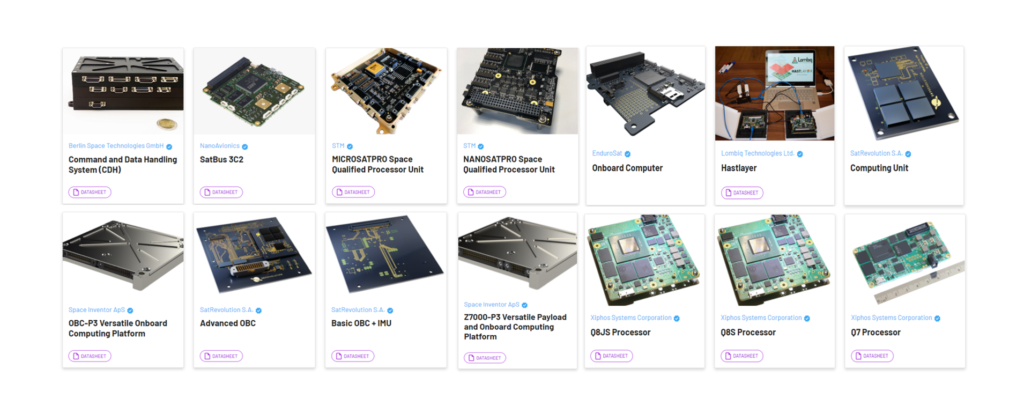This article offers an introduction to digital marketing in the space industry, highlighting some of the key elements that can help businesses succeed in this highly specialized and competitive market.
The space industry is evolving rapidly, with new technologies and innovative solutions emerging every month in order to cater to the growing (and changing) demands of the market. For business developers, salespeople, and marketers, it is crucial to stay ahead of the curve in this competitive landscape.
One way to achieve this is by leveraging digital marketing strategies that can effectively reach target audiences, generate leads, and drive sales. Here’s a simple introduction to this approach.
Plot your digital strategy first
From a revenue perspective, digital marketing in the space industry should be approached like any other business development initiative. You need to start by setting out a strategy that covers:
- Who you are trying to reach,
- What your objectives are in doing so, and
- How will that contribute to the wider goals of your business.
With these in mind, don’t think about digital marketing as something separate from your other sales and business development activities. Instead, simply use digital tools and approaches to complement them.
A good place to start is to consider the digital element of your current sales processes. And trust me – there is a digital element.
We know first-hand that engineers are constantly reviewing supplier websites, datasheets, and other resources in order to do (at least) first order assessments of your space products and services. If these materials aren’t available, up-to-date, and of a reasonable quality, then you might lose prospective sales.

You may primarily win new business in person or over the phone, and you might think that expensive conferences and printed brochures offer the best return on investment – but many of the people you meet are certain to search for you online at some point in the process.
(Note – one simple thing you can do today is to update the copyright year in your website footer, if you have one. It is an easy thing to forget and it might seem trivial – but it is a bit disconcerting for your customers to see “2017” at the bottom of a site on which they were considering starting a six-figure transaction!)
You need to appear credible and legitimate to anyone searching for your business. This is crucial in the space industry, particularly if you aren’t a well-known brand, due to the nature of many applications.
So how do you achieve this? If you have a basic strategy in place and you appreciate the importance of following it, next let’s look at the tactical side of digital marketing in the space industry.
The digital approach to spreading the word
At a very basic level, you can think of digital marketing as matching a message to an audience and then scaling up.
The message is the description of your products and services, or, more specifically;
The description of the benefits that your products or services bring to a key target market + a description of your suitability to provide them (e.g. track record, customer support, financing options etc.)
The audience is your target customer – but there is also some nuance here. For example, the procurement engineer with oversight of the budget might be a different person to the systems engineer performing a trade study. But it is the latter person you need to convince – so that is the one to whom you need to speak.
Scaling up is simply a function of using digital channels. At a conference you can meet maybe 50-100 people a day, for a week (usually more like 2-3 days) for a total of 700 sales conversations maximum. But you’d likely need a holiday after that!
Your website could easily get 700 visitors in one day – maybe every day – without major additional effort in answering their questions. It’s always on and can be viewed at any time (subject to any national restrictions, depending on where you live) – so it needs to do the basic level of work to back up what you say to potential customers and partners in other situations.
To put your strategy into action, set out (or review) your target audience and the messages you want to share with them. Next, let’s take a closer look at the channels available to scale up the communication and build your space business online.

Channel tactics
One of the simplest ways to organize a digital strategy is to structure it around the channels you will use to share your key messages. Broadly, there are two main categories of platform; primary and secondary, explained in more detail below:
Primary channels
These are channels on which it is possible to actually make a sale, or at least to definitively initiate a transaction process. These are the online locations where you will be sharing your sales messages and offers, carefully designed to resonate with your target market, and on which they can directly contact you or submit their interest in procuring from you. The main ones are:
Your website – this is the obvious primary channel. You should have detailed information about your products and services, your track record, and any other topic that helps back up the messages to your target market. It should be clear and easy to get in touch with you in order to discuss a potential sale.
Digital marketplaces (such as satsearch) – our marketplace attracts motivated buyers from around the world, from a wide range of companies and organizations. This includes engineers that may not have heard of your brand, procurement managers looking for quotes and proposals on an anonymous basis, and regular users that prefer to carry out multi-vendor comparisons and trade studies before initiating a sales discussion. These are all potential customers that are less likely to find and/or utilize a manufacturer’s own website to become a customer. Find out more here.
Social media – while a lot less likely, it is conceivable that a prospect might approach you directly on a social media channel about a potential sale – particularly on LinkedIn, which has a more professional, business-minded userbase than other platforms. So ensure that any social media accounts you use are up to date and managed as needed.
Secondary channels
You make sales on your primary channels, but you need to get people to them in the first place. That’s where secondary channels come in.
There are many different types of secondary channels out there, and it is well beyond the scope of this article to list and give detailed advice on each of them, but here are some of the main ones to consider:
Social media – as mentioned above, active social channels might be a primary channel but are more likely to be used to drive traffic to your website or marketplace listings. Populate your accounts regularly with suitable, valuable content and occasional promotions of your products and services.
Content on third-party sites – create, or participate in, articles, videos, podcasts, and other content pieces that are published on other people’s websites or channels, and that link back to your website or other important pages.
Search engines – you can’t control what search engines show about your business, and for what searches, but you can affect it by utilizing search engine optimization (SEO) best practices. Consider search engines as another way to generate traffic for your primary channels in your digital marketing strategy.
Advertising – although potentially costly, online advertising is a simple way of practically guaranteeing traffic to your primary channels.

Conclusion – track, test, and keep it simple
It can be very easy to get lost in the weeds when trying to build or evolve approaches to digital marketing in the space economy today. New tactics are launched (and sometimes declared dead) on a daily basis and there is a whole industry out there offering tools, advice, education, and services to help.
So don’t get overwhelmed. The key is to track the important metrics from the very beginning. Your aim should be to make sales – this is business after all – so ensure that you’re tracking what prospects originate from (or make use of) your digital channels. Then get more complex and work out how best to track the behaviors that lead to these engagements.
If you can tweak your approaches based on the data, you have the potential to build an ever more powerful and successful business development machine online.
This introduction to digital marketing in the space industry has explored how you can create a simple strategy to build business online and put it into practice with key messages, for specific target audiences, on primary and secondary channels.
There’s obviously a lot more that goes into this process, and we will discuss many of the topics in more detail in future articles, but hopefully this overview can help you get started and stake your claim in today’s competitive space industry.
Finally, if you’re interested in short-cutting the entire approach, and instead want to tap into existing demand from right across the world, click here to find out more about the Satsearch Membership Program.
